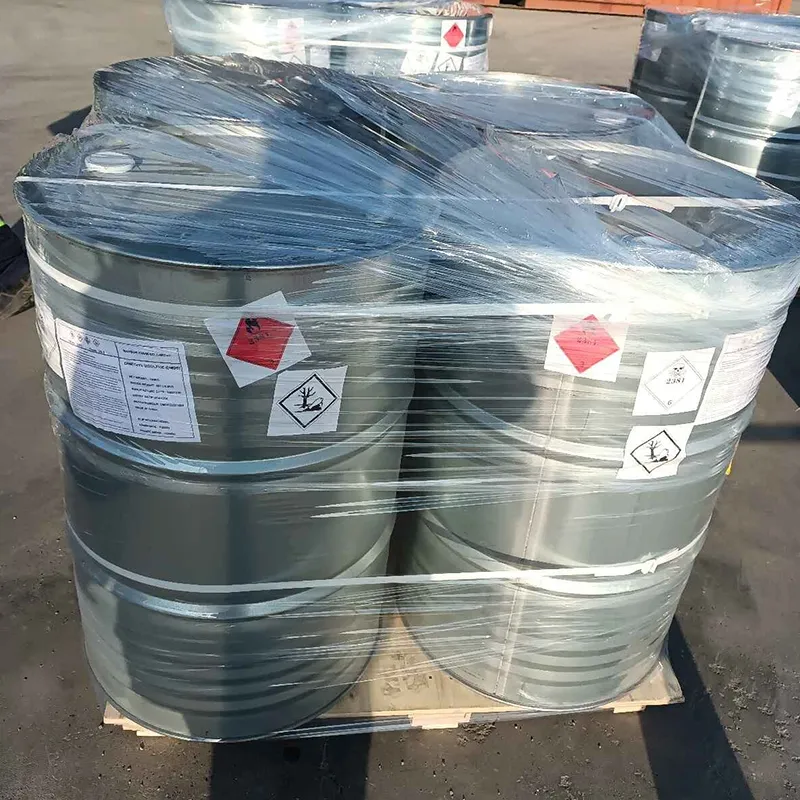
Comparison of Acetic Acid and Formic Acid Properties and Applications
Acetic Acid and Formic Acid A Comparative Analysis
Acetic acid and formic acid are two important carboxylic acids, each with distinct chemical properties and applications. Understanding their similarities and differences is fundamental to both organic chemistry and industrial applications.
Chemical Structure and Properties
Acetic acid, chemically denoted as CH₃COOH, is a simple carboxylic acid characterized by a two-carbon structure. Its functional group consists of a carbonyl (C=O) and a hydroxyl (–OH) group, which lends it acidic properties. On the other hand, formic acid (HCOOH), the simplest carboxylic acid, contains only one carbon atom. This structural difference significantly influences their chemical behavior and reactivity.
In terms of physical properties, acetic acid is a colorless liquid with a distinct pungent smell, often reminiscent of vinegar due to its presence in fermented products. It has a boiling point of 118°C. Formic acid, also a colorless liquid, has a more potent odor and is known to be more toxic than acetic acid, with a boiling point of 100.8°C. Both acids are highly soluble in water, but formic acid’s higher acidity makes it a stronger proton donor compared to acetic acid.
Natural Occurrence
Both acids occur naturally. Acetic acid is primarily found in vinegar, produced through the fermentation of ethanol by acetic acid bacteria. Formic acid is found in the venom of certain ants (hence the name) and in various plants. These natural occurrences highlight their roles in ecosystems, particularly in defense mechanisms against predators in the case of formic acid.
Industrial Applications
acetic acid formic acid

The applications of acetic acid and formic acid are diverse and significant. Acetic acid is widely used in the production of synthetic fibers, plastics, and food preservatives. It acts as a key ingredient in the manufacture of polyethylene terephthalate (PET) for bottles and fibers and is vital in food processing as a flavoring agent and preservative.
Conversely, formic acid finds utility in agriculture as a silage additive, helping to preserve animal feed. It is also used in leather tanning, as a reducing agent in various chemical reactions, and in the production of pesticides. Furthermore, formic acid serves as a potential alternative energy source, particularly in fuel cells, due to its ease of decomposition into hydrogen.
Environmental Impact and Safety
Both substances raise environmental concerns due to their acidity. Acetic acid, while largely safe and biodegradable, can contribute to environmental degradation in high concentrations. In contrast, formic acid poses more immediate health risks; it can cause burns upon contact with skin and is harmful if inhaled.
Safety protocols should be diligently followed when handling either acid. Personal protective equipment (PPE) is essential in industrial settings to prevent exposure, with proper ventilation and emergency measures in place to handle accidental spills or exposures.
Conclusion
Acetic acid and formic acid, while both crucial carboxylic acids, demonstrate a range of differences in structure, reactivity, applications, and environmental impact. Their unique properties enable varied uses across industries, from food preservation to plastic manufacturing and agriculture. Understanding these acids’ characteristics is essential for chemists, industrial practitioners, and environmental scientists, ensuring they can harness their benefits while mitigating risks. As our understanding of these compounds continues to grow, we can explore new applications and further appreciate the roles these acids play in our daily lives and the environment.
-
Pure Sodium Dichloroisocyanurate Dihydrate | Powerful DisinfectantNewsAug.29,2025
-
Industrial Chemicals: Quality & Purity for Every IndustryNewsAug.28,2025
-
Nitrile Rubber Honoring Strict Production StandardsNewsAug.22,2025
-
Aspartame Ingredients Honoring Food Safety ValuesNewsAug.22,2025
-
Fertilizer for Balanced Plant NutritionNewsAug.22,2025
-
Cyanide Gold Processing with High Purity AdditivesNewsAug.22,2025
-
Formic Acid in Textile Dyeing ApplicationsNewsAug.22,2025
Hebei Tenger Chemical Technology Co., Ltd. focuses on the chemical industry and is committed to the export service of chemical raw materials.
-

view more DiethanolisopropanolamineIn the ever-growing field of chemical solutions, diethanolisopropanolamine (DEIPA) stands out as a versatile and important compound. Due to its unique chemical structure and properties, DEIPA is of interest to various industries including construction, personal care, and agriculture. -

view more TriisopropanolamineTriisopropanolamine (TIPA) alkanol amine substance, is a kind of alcohol amine compound with amino and alcohol hydroxyl, and because of its molecules contains both amino and hydroxyl. -

view more Tetramethyl Thiuram DisulfideTetramethyl thiuram disulfide, also known as TMTD, is a white to light-yellow powder with a distinct sulfur-like odor. It is soluble in organic solvents such as benzene, acetone, and ethyl acetate, making it highly versatile for use in different formulations. TMTD is known for its excellent vulcanization acceleration properties, which makes it a key ingredient in the production of rubber products. Additionally, it acts as an effective fungicide and bactericide, making it valuable in agricultural applications. Its high purity and stability ensure consistent performance, making it a preferred choice for manufacturers across various industries.





